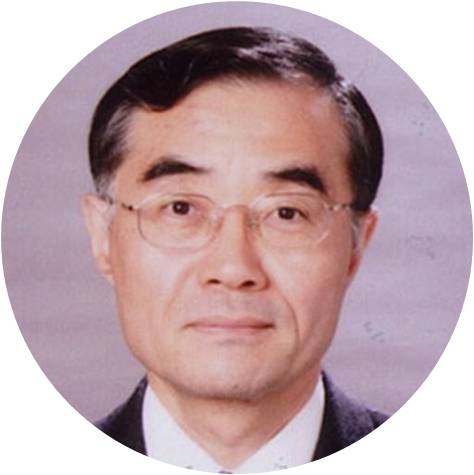- 首頁
- 2019 ICFEOM
- PROGRAM
- SPEAKERS
Invited Speakers
INTERNATIONAL (In Alphabetical Order)

Robert Turesky, BSc, PhD
- University of Minnesota, USA
- Title: Mechanistic Studies on Cooked Meat in Human Cancer
Abstract
Dr. Rob Turesky is a Professor in the Department of Medicinal Chemistry, and the Director of the Masonic Cancer Center's Analytical Biochemistry shared resource (2013 – present), a mass spectrometry facility devoted to cancer and chemoprevention programs at the University of Minnesota. Dr. Turesky received his B.Sc. in biochemistry from the University of Massachusetts, Amherst, and Ph.D. in nutrition and food science from M.I.T. Prior to his current position, Dr. Turesky served as Group Leader of the Biomarkers Unit, Nestlé Research Center, Lausanne, Switzerland (1986 – 2000); Division Director of Chemistry, National Center for Toxicological Research, U.S. Food and Drug Administration, Jefferson, AR, (2000 – 2004); and Principal Investigator, Wadsworth Center, New York State Department of Health (2004 – 2013). Dr. Turesky was appointed as the inaugural Masonic Chair in Cancer Causation at the University of Minnesota in 2019. Rob’s research is focused on the exposure assessment and biochemical toxicology of environmental and dietary cancer-causing agents. He has established methods to measure exposures to aromatic amines, human bladder carcinogens formed in tobacco smoke and hair dye; heterocyclic aromatic amines, potential human colorectal and prostate carcinogens formed in cooked meats; and aristolochic acids, potent nephrotoxins and renal carcinogens present in some traditional herbal medicines. His lab has characterized the metabolism and mechanisms of genotoxicity of these procarcinogens in rodents, human cell lines, and in vivo. His laboratory has established many biomarkers of these chemicals, including urinary metabolites, protein- and DNA adducts, which are measured by mass spectrometric (MS) methods in molecular epidemiology studies designed to understand the role of chemicals in the etiology of cancer. Novel technologies and MS-based approaches have been established to identify DNA adducts of these and other carcinogens in formalin-fixed paraffin-embedded tissues and exfoliated urinary cells, two biospecimens largely underutilized in cancer biomarker research. New mass spectrometry-based technologies are under development to simultaneously screen for DNA adducts of a wide array of dietary and environmental genotoxicants. These MS technologies, termed DNA adductomic, are expected to provide comprehensive data on the chemicals that damage the genome and contribute to cancer etiology.
Shao-Ling Zhang, PhD
- University of Montreal, Canada
- Title: Hedgehog Interacting Protein (Hhip), a Novel Protein in Type 2 Diabetes (T2D)
-
Abstract
The incidence of T2D will account for approximately 85%-90% of all diabetes cases by 2040 and constitutes a major health burden in developed countries. T2D is a metabolic disorder characterized by hyperglycemia associated with obesity-induced peripheral insulin resistance and intrinsic pancreatic islet beta cell dysfunction. Long-term complications of T2D may lead to multiple organ dysfunction affecting the heart, kidney, nervous system, eye, artery and blood vessels. A major challenge, given the epidemic of T2D, is to develop more effective preventive and therapeutic strategies based on better understanding of the underlying pathophysiology.
Hedgehog Interacting Protein (Hhip), a signaling molecule of the hedgehog pathway is highly expressed in vascular-rich tissues such as liver, lung, brain, kidney and pancreas. Aberrant expression of Hhip has been linked to several human diseases, such as pancreatitis, chronic obstructive pulmonary disease, and various tumors.
This talk will provide the insight of Hhip in the pathogenesis of T2DM-related pancreatic and kidney dysfunctions.

Stephen Hecht, PhD
- University of Minnesota, USA
- Title: Interdisciplinary Collaborative Research on Environmental and Tobacco Carcinogens, Their Biomarkers, and Cancer Prevention
Abstract
Cigarette smoking causes at least 15 different types of cancer including 80% of lung cancer in males and 50% in females, worldwide. This presentation will focus on two important classes of tobacco smoke carcinogens: tobacco-specific nitrosamines and polycyclic aromatic hydrocarbons (PAH). PAH, combustion products found in polluted air and water as well as in broiled food, are also implicated as causes of cancer in non-smokers. Urinary metabolites of tobacco-specific nitrosamines and PAH, including 4-(methylnitrosamino)-1-(3-pyridyl)-1-butanol (NNAL) and phenanthrene tetraol, respectively, are quantified by mass spectrometry and serve as biomarkers of carcinogen uptake in humans. A panel of biomarkers is available to assess uptake of multiple carcinogens and toxicants by smokers or people exposed to environmental pollution. The application of these biomarkers in clinical and epidemiologic studies to assess carcinogen exposure and cancer risk will be discussed. A unique feature of this research is the use of deuterium labelled phenanthrene to determine its pattern of metabolic activation and detoxification providing significant new data on the effects of cigarette smoking on PAH metabolism in humans.

Stuart McLaren, PhD, MSc(Hons)
- Massey University, New Zealand
- Title: The Drinking Water Crises of Flint (USA) and Havelock North (New Zealand) - Flagrant Disregard of Public Health
Abstract
During the period of 2014 – 2016, there were two serious cases of poisoning of municipal water supplies of the city of Flint, Michigan, USA and the town of Havelock North, Hawkes Bay, New Zealand. These had profound implications for public health in their respective countries. While the nature of both crises was different, the widespread nature of the failings were strikingly similar. These included, failure of supply authorities to protect the integrity of their source water, “wait and see” approach to address problems if and when they occurred, negligent approach to regulatory oversight and responsibility, substandard facilities and lack of knowledge and training of staff, and failure of consultants and advisory services engaged by suppliers. The lessons learnt from examining both crises have significant implications for drinking water providers, regulatory authorities, consultants and governments around the world.
Teruhiko Kido, PhD
- Kanazawa University, Japan
- Title: Environmental Health in Japan and Vietnam - Itai-itai Disease and Agent Orange/Dioxin
Abstract
Dr. Teruhiko KIDO, MD. PhD is currently Visiting Professor of Kanazawa University, Institute of Medical, Pharmaceutical and Health Sciences, Japan. He graduated from School of Medicine of graduate course, Kanazawa University and his major is Environmental Health. He was the former Vice Dean of Faculty of Health Sciences. He has been researching the chronic cadmium poisoning to human health in general environment in Japan over three decades. Current special fields are “dioxin exposure and human health effects in Vietnam” since 2001. He is a member of the board of directors for the Japanese Society for Hygiene. He became Professor Emeritus in Hanoi Medical University since 2009. “The new project on improvement of the growth retardation for the low weight Infants at the severely polluted areas by herbicides/dioxins in Vietnam” has been ongoing since August in 2019 under Japan International Cooperation Agency (JICA). He presented a plenary lecture at The 39th International Symposium on Halogenated Persistent Organic Pollutants held in Kyoto, Japan in August, 2019. Scientific Achievements are 394 original scientific publications and 29 book chapters and articles, both in English and Japanese.

Wyatt Page, PhD, BE(Hons), ASNZ
- Massey University, New Zealand
- Title: Sound Health
-
Abstract
Dr Page is Associate Professor of Acoustics and Human Health and Deputy Head of the School of Health Sciences at Massey University in New Zealand. He is a key member of the Environmental Health team that deliver a range of undergraduate and post graduate programmes. He also teaches into several of the Occupational Health and Safety courses and into the built environment masters programme. Dr Page leads the research platform 'Noise and its effects on Human Health', and is active in acoustics and sound consultancy. He is co-principal editor of the New Zealand Acoustics Journal and a member of the ISO working committees (ISO/TC 43/SC 1 Noise; ISO/TC 43/ SC 1/WG 45) on the description and measurement of environmental noise. He has also participated in a range of health research with a physical activity theme, where his technical and technology skills have enabled a unique contribution.
Domestic (In Alphabetical Order)

Chia C. Wang, PhD
- National Sun Yat-sen University, Taiwan
- Title: Characterization of Secondary Organic Aerosols and Reaction Intermediates Formed During Ozonolysis of Monoterpenes via Newly Developed Aerosol Spectroscopy Approaches
-
Abstract
Objective: Monoterpenes are abundant in the atmosphere, and their reactions with ozone serve as a major source of secondary organic aerosols (SOA). However, direct evidence of its reaction intermediates (RI) and their evolution remain lacking. The objective of this set of studies is to better understand the characteristics of secondary organic aerosols and reaction intermediates formed in the ozonolysis of monoterpenes, including α-pinene and limonene.
Methods: The temporal evolution of ozonolysis of α-pinene was probed by the home-built, millisecond time-resolved rapid-scan Fourier transform infrared (FTIR) spectroscopy coupled with a newly custom-built, temperature-variable long-path aerosol cooling chamber. The valence electronic structures of monoterpenes were investigated by the aerosol VUV photoelectron spectroscopy.
Results: α-pinene is the most abundant monoterpene in the atmosphere, accounting for more than 50 % of global monoterpene emission. On the other hand, limonene is a cyclic monoterpene commonly found in the household detergents and cosmetic products. Their reactions with ozone has been suggested to be the most abundant source of secondary organic aerosols (SOA), greatly affecting the indoor air quality. By applying the time-resolve infrared spectroscopy and aerosol VUV photoelectron spectroscopy, new insights into ozonolysis of these two important monoterpenes and their contribution to the SOA formation were provided.
Conclusion: Ozonolysis of monoterpenes is extremely crucial in the formation of secondary organic aerosols, affecting the air quality, climate and public health. Important factors that play tremendous role in affecting this process were revealed from the newly developed aerosol spectroscopic approaches.
-

Chih-Hong Pan, PhD
- Institute of Labor, Occupational Safety and Health, Ministry of Labor, Taiwan
- Title: Reduction of Cooking Oil Fume Exposure by Engineering Intervention in Chinese Restaurant
Abstract
Objectives: This study attempted to use a new engineering intervention measure, embracing air curtain device, to increase the capture efficiency of kitchen range hoods and reduce COF exposure for Chinese restaurant workers.Methods: This study installed the embracing air curtain device (EACD) in six Chinese restaurants in which the cooks complained of COF exposure. The EACD was introduced to these kitchens. Before- and after- installation measurements were taken to compare changes in particulate matter (PM) and polycyclic aromatic hydrocarbons (PAHs) in kitchen air, and in levels of urinary 8-hydroxy-2’-deoxyguanosine (8-OHdG) and malondialdehyde (MDA). The association of PM and PAHs in air and 8-OHdG and MDA in urine was evaluated by linear mixed–effects regression analysis.
Results: The results for the six restaurants studied showed that geometric mean kitchen air levels of PM10, PM2.5, PM1.0, and total particulate PAHs were significantly reduced after the engineering intervention was implemented with the EACD. Urinary levels of 8-OHdG and MDA in cooks were significantly lower after the EACD installment. PM2.5, PM1.0, and benzo(a)pyrene (BaP) levels were positively associated with urinary 8-OHdG levels after adjusting for key personal covariates. Furthermore, urinary MDA levels in cooks were positively associated with BaP levels after adjusting for key personal covariates.
Conclusion: This study demonstrates that the EACD is effective for reducing PM and PAHs in COF as well as oxidative stress levels in cooks working in Chinese kitchens.

Hung-Yi Chuang, ScD, MOH
- Kaohsiung Medical University, Taiwan
- Title: Occupational Metal Exposure in Taiwan
-
Abstract
Some metals are widely used in industry. However, how to maintain the work without jeopardizing the health, it is necessary to know what kind of toxic substances may be exposed in the work environment. The requirements for the basic knowledge of occupational safety and health, furthermore, individual protection should not be neglected. Occupational toxic metals in Taiwan, such as Lead (Pb), Arsenic (As), Manganese (Mn), Chromium (Cr), Cadmium (Cd), Mercury (Hg) , Nickel (Ni), and Indium (In), are primarily required for occupational health examination every year. This report will present the preliminary data on these health checks and the performance of metal toxicology.
-

Lukas Jyuhn-Hsiarn Lee, MD, MSc, PhD
- National Health Research Institutes, Taiwan
- Title: Overview of Asbestos Related Disease Burden in Taiwan
-
Abstract
Dr. Lukas Lee is an active investigator as attending physician serving at the National Institute of Environmental Health Sciences, National Health Research Institutes (NIEHS-NHRI), and adjunct assistant professor at the College of Public Health, National Taiwan University (NTU), and adjunct attending physician at the Departments of Neurology, and Environmental and Occupational Medicine, NTU Hospital. His research is focusing on impact assessment of occupational and environmental cancers (OECs), neurological disorders and quality of life, and overwork-related health risks in Taiwan. He is a board-certified occupational environmental medicine (OEM) physician and well-trained clinical neurologist in active research-based clinic studies. He is also the member of Taiwan Environmental and Occupational Medicine Association, and Taiwan Public Health Association, and Taiwan Neurological Society, and Taiwan Movement Disorder Society.

Pei-Shih Chen, PhD
- Kaohsiung Medical University, Taiwan
- Title: Household Airborne Endotoxin and Schoolchildren's Health
Abstract
Objective: To evaluate the association between the presence of asthma and allergy, and airborne endotoxin in homes of school-age children in Kaohsiung City, Taiwan, with a case-control study design by matching the age and class exposure.
Methods: Data collection of home visits included an interviewer-administered questionnaire and air sampling of participants’ homes for endotoxin, bacteria, and fungi, as well as temperature and relative humidity measurements.
Results: Endotoxin was detected in all air samples with a median value of 0.67 EU m-3. In the adjusted logistic regression model, household airborne endotoxin was associated with higher prevalence of asthma and allergy; OR= 4.88 (95% CI: 1.16-20.55) for Q3 (between 0.67 and 1.97 EU m -3) vs. Q1 (< 0.31 EU m -3), with statistical significance. Airborne fungi were associated with higher prevalence of asthma and allergy; OR = 4.47 (95% CI: 1.13- 17.69) for Q3 (between 314 and 699 CFU m -3) vs. Q1 (< 159 CFU m -3) in adjusted logistic regression models.
Conclusion: Airborne endotoxin and fungi were significantly associated with children’s asthma and allergy.

Wei-Ting Laio, PhD
- Kaohsiung Medical University, Taiwan
- Title: Anti-inflammatory Effects Induced by Near-infrared Light Irradiation via M12 Macrophage Polarization
-
Abstract
Global warming is caused by infrared radiation and related heat trapped in the atmosphere. Increased mortality, heat shock, infections, allergic diseases, and skin cancers are associated with global warming. Among infrared, only near-infrared (NIR) can penetrate into the dermis, which has significant biological effects on skin component cells and immune cells. Since macrophages play initial roles in directing immune responses, we investigated the effects of NIR on macrophages. We used a NIR device that allows for maintenance of a constant temperature with concomitant NIR radiation. Proteomic analysis revealed that NIR radiation enhanced the expression of citrate synthase (CS) in the THP-1 monocyte cell line. The increased CS protein expression was triggered by NIR-induced histone-3-lysine-4 hypermethylation on the CS gene promoter, but not by heat. NIR-induced CS expression promoted macrophage M2 polarization and induced TGF-β1 release from CD4+ cells. These effects were validated in an abdominal NIR-irradiated mouse experiment. In a PMA-induced inflammatory model on mouse ear, NIR irradiation showed significant anti-inflammatory effects, including decreased redness and swelling, as well as an increase in M2 macrophages, which resulted in higher TGF-β1 and TNF-α levels in PMA-treated ear. Our findings provide a theoretical basis for adverse health effects of global warming.
2014 © 高雄醫學大學 精準環境醫學研究中心
建議使用 Chrome / Safari / Firefox 瀏覽
- 校址:高雄市三民區十全一路100號 國際學術研究大樓 6樓
- 電話:07-3121101 ext. 2318 (行政辦公室/實驗室)
- 信箱:envmed@kmu.edu.tw

